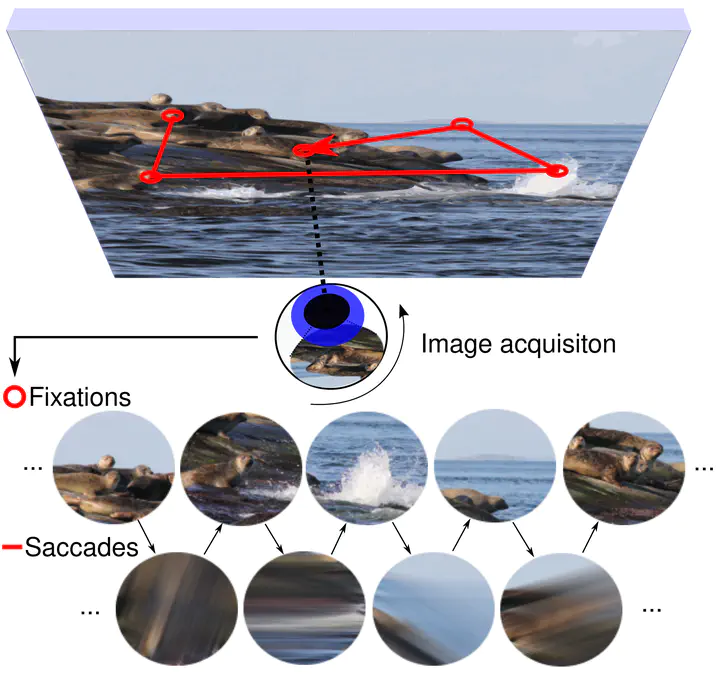
Abstract
Rapid eye movements, so-called saccades, are the fastest and most frequent human movements and cause projections of objects in the world to constantly shift across the retina at high velocities, thereby producing large amounts of motion blur. In contrast to accounts of saccadic suppression, this work explores the extent and potential functional role of intra-saccadic perception. As saccades are fast and brief events, technical challenges were addressed. Study I describes a custom LED-based anorthoscopic presentation setup capable of displaying text and images strictly during saccades. In study II, a novel online saccade detection algorithm enabled rapid, gaze-contingent display changes using a DLP projection system running at 1440 fps. Studies III and IV investigated whether intra-saccadic motion streaks, i.e., blurred traces routinely induced by stimuli moving at saccadic speeds, could serve as cues to establishing object correspondence across saccades. Motion streaks not only enabled perceptual matching of pre- and post-saccadic object locations, while performance depended strongly on streak efficiency, but also facilitated gaze correction in response to intra-saccadic target displacements, that was previously found to be mainly driven by objects’ surface features. Finally, study V explored the subjective appearance and localization of intra-saccadic motion streaks, tasking observers to reproduce their trajectories. Computational modeling of resulting response patterns suggested that retinal positions over time were combined with a damped eye position signal to readily localize intra-saccadic input in world-centered coordinates. Taken together, these results invite the intriguing hypothesis that intra-saccadic visual signals are not discarded from processing and might affect trans-saccadic perceptual and motor processes. The potential role of intra-saccadic perception for active vision, as well as directions for future research, are discussed.
Is intra-saccadic vision merely an epiphenomenon or could visual information that reaches the eye during saccades be used by the visual system? That was the question of my cumulative doctoral dissertation, which features not only a synopsis of all studies conducted up to this point, but also a review of the saccadic-suppression and motion-streak literature to put these findings into context. The dissertation has been awarded two prizes – the Humboldt Prize and the Lieselotte Pongratz-Promotionspreis by Studienstiftung des Deutschen Volkes (see also the short movie).